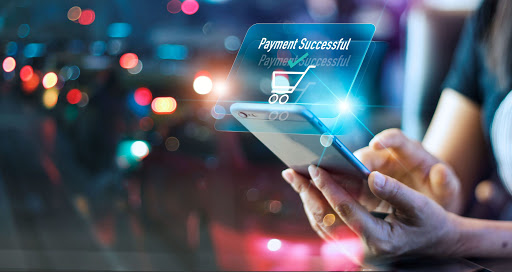In light of the fourth technological revolution, millions of users around the world can make online purchases, transfer money, receive it, and withdraw it all within moments. In addition to blockchain technology, which has enabled digital currencies, open banking services, electronic wallets, mobile phone payments, and prepaid cards have spread. Thus, these digital forms have become the most preferred methods by users around the world due to speed and ease. In the next few lines, we will talk about the most important features of the future and how technological development is reflected in the payments industry.
- With the development of artificial intelligence (AI) and machine learning (ML) technologies and the spread of algorithms that rely primarily on data, we find that financial institutions have begun to use these technologies to automate operations and detect fraudulent operations, and the truth is that the real ability of these technologies extends beyond From these simple functions, tools integrated into artificial intelligence technologies can read customers’ transaction history – including purchases and spending – and determine their consumption pattern and even predict their future activity. These tools can also suggest to each customer the ideal payment method that suits his consumption pattern.
Not only that, voice-activated language processing (NLP) technologies have become one of the ways to complete transactions and payments. You can buy your daily supplies, make payments, and have them delivered to the door of your apartment, and all you have to do is just order from a device in front of you, perhaps your mobile phone. In terms of securing payments, voice technologies also work as part of payment processing systems, where the biometric fingerprint of the voice performs intelligent verification of the user. In the future, these applications will grow as technology develops. - Data is the new oil and its uses are endless. The value of the data analysis industry market has reached approximately $274 billion. By collecting and analyzing data, customer shopping behavior and consumption patterns are determined, as well as targeting ads and providing recommendations on products that the user may prefer. Already, e-commerce giants are using data to target buyers in order to increase sales through personalized discounts and personalized offers.
On the other hand, in banks and other financial bodies, the speed of applying these technologies in this field is slowing down. But in the future, banks will analyze customer purchases data and recommend different banking products to them. Loan officers will be able to monitor the activity of large borrowers and suggest new products to reduce risks and lending costs. Insurance companies will calculate risks for their customers based on their previous payment history and what they write on social media. - In the past years, the use of mobile payment mechanisms for online shopping has clearly increased. In fact, we find that the average time a user spends using a smart mobile phone is more than 4 hours every day. It is not surprising that social media platforms have added a “buy” feature to complete direct purchases with one click for products offered by other users on those platforms.
The use of phones did not stop at making payments for electronic purchases, but with the rapid development of financial technology (FinTech), users became able to manage, transfer, send, and receive money in moments. Mobile phone wallets and digital-only banks (neobanks) will become more realistic as legal complications disappear. The best example of this is Chime Bank, which is a “neobank” in the United States that was founded in 2013 and includes more than 5 million users. - An important element in international trade is cross-border financial transactions, which were and still are slow, expensive, and take a long time due to hard currency difficulties and government complications, which has reached the point in some developing countries that the process of opening a bank account has turned into a bureaucratic nightmare. This has all encouraged entrepreneurs and innovators. To find alternative ways to simplify international payment systems. And here we are now witnessing the revolution of digital currencies, thanks to blockchain technology, as Bitcoin and more than 3,000 other cryptocurrencies around the world have become the practical solution for “cross-border” non-cash currencies due to their decentralized nature, independence, and the speed and ease of their movement across borders. Multinational companies are also working on issuing their own digital currencies, and Barclays Bank and HBC have launched pilot projects based on blockchain technology aimed at accelerating international payments, and there are more than 500 financial companies around the world working to benefit from blockchain to enhance direct transactions (B2B) between… Companies.
In the near future, countries and governments will realize the need to issue their own government-backed national digital currency to become an alternative to traditional paper or plastic currencies. Central banks will carry out mining operations and keep records for these currencies and determine the exchange rate based on their monetary policies. Banks will work to improve their cross-border operations through… Use real-time applications. - Clearly, we find that giant technology companies have begun to take on the role of credit companies and financial institutions, and in the near future, we will witness some medium-sized banks shifting to take on the role of technology companies by implementing digital payment methods with customer-centric business models. We will also witness economic alliances between a group of banks and financial technology (Fintech) companies to provide a broader range of services, including stimulating companies to develop the digital payments industry, increasing the use of smartphones, and relying on cloud computing, artificial intelligence applications, and big data analysis.
The future will not be free of the negative legacies of the present, as a result of which many companies will collapse


